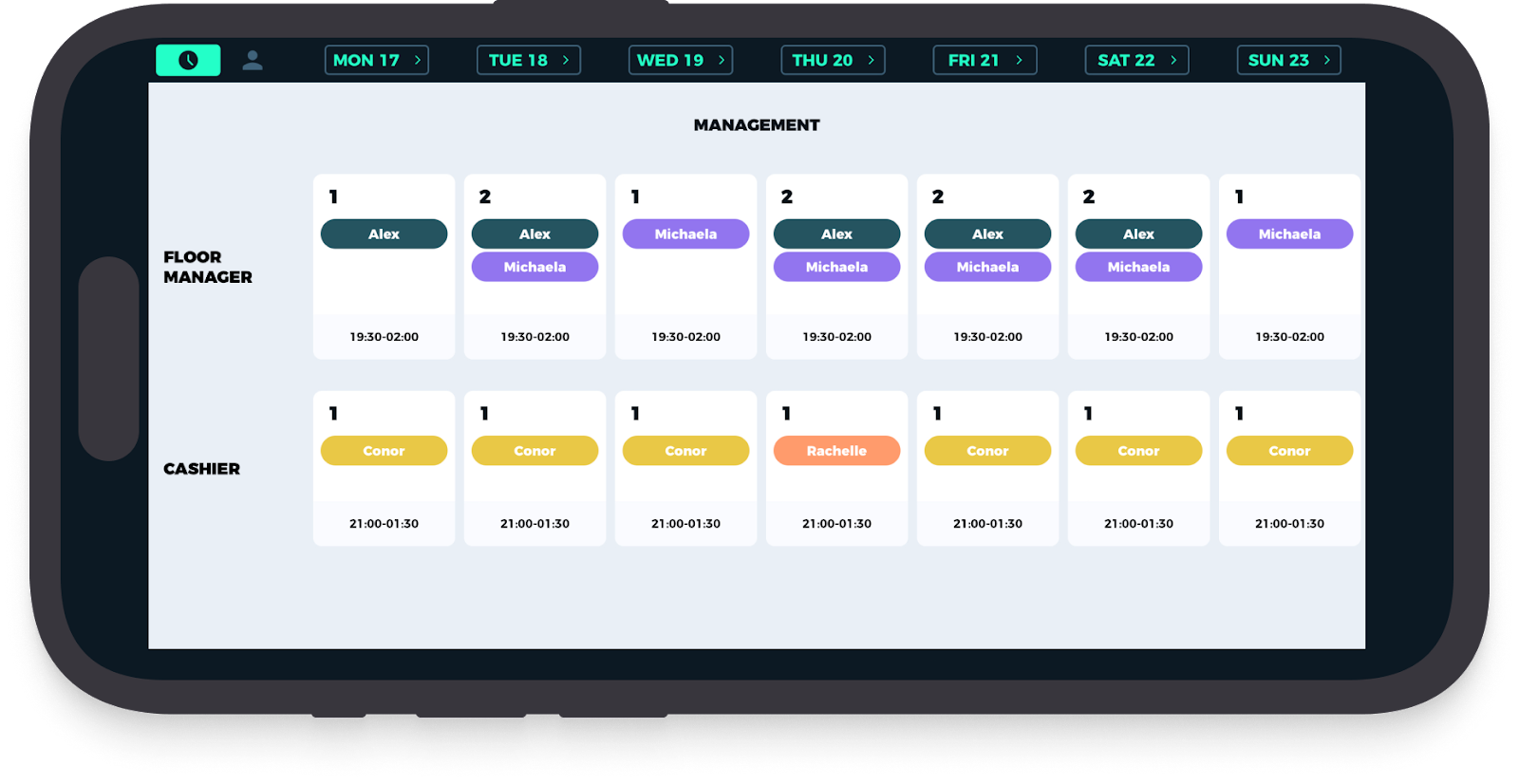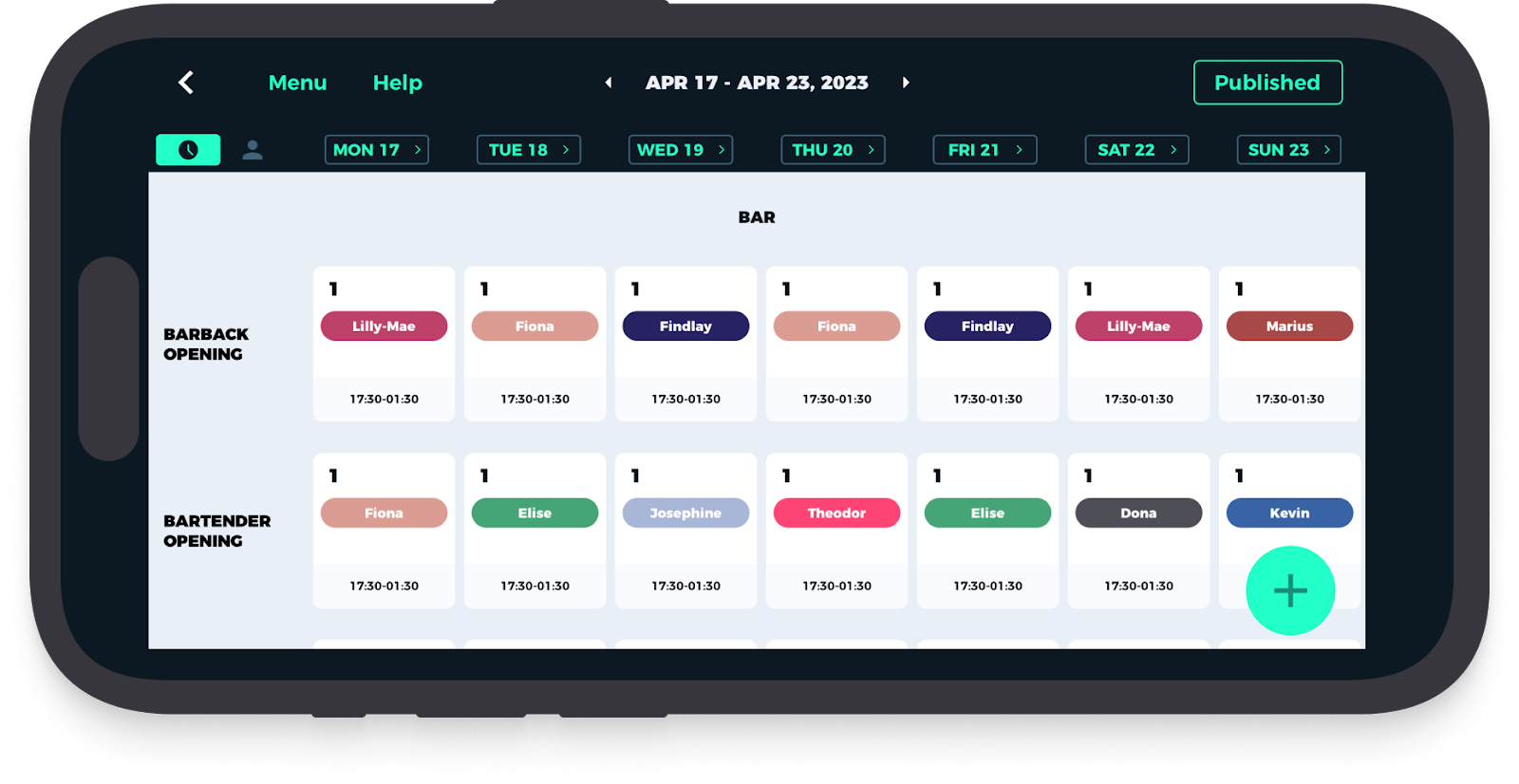Mastering Employee Scheduling: Tips for Restaurant Managers

Employee scheduling plays a pivotal role in the productivity and efficiency of any restaurant or bar. The process involves creating and managing work schedules for employees to ensure that staffing levels are aligned with business demands while complying with labor laws and regulations.
In this article, we will explore the components of employee scheduling, discuss its benefits, address common challenges, and delve into best practices for effective scheduling, with a focus on leveraging employee shift schedule apps and other tools.
Components of employee scheduling
There are four main components of employee scheduling that should be considered when creating work schedules:
- Employee Availability: Understanding when employees are available to work is essential. This includes their preferred working hours, time-off requests, and any other factors that may impact their availability.
- Staffing Needs: To meet business demands, it is crucial to determine the number of employees needed for each shift and ensure that the right mix of skill sets is available to provide exceptional service to customers.
- Labor Laws and Regulations: Adhering to relevant labor laws and regulations, such as working hours, breaks, and overtime, is essential to avoid potential legal issues and maintain a positive reputation in the industry.
- Job Requirements: Each position in a restaurant or bar comes with specific job requirements, and it is essential to schedule employees according to their expertise and experience.

Benefits of effective employee scheduling
Effective employee scheduling offers several benefits to restaurant and bar owners and managers:
- Ensuring Adequate Staffing: Proper scheduling helps maintain optimal staffing levels, ensuring that service levels are maintained and customer satisfaction is maximized.
- Minimizing Overtime Costs: By avoiding overstaffing or understaffing, businesses can control labor costs and minimize the need for last-minute adjustments, such as calling in additional staff or paying overtime.
- Boosting Employee Morale and Job Satisfaction: A well-organized scheduling system that takes into account employee preferences and work-life balance fosters a positive work environment, reducing staff turnover.
- Enhancing Customer Experience: Adequate staffing levels and a motivated workforce directly contribute to exceptional customer service, which, in turn, leads to a positive customer experience.
Common challenges in employee scheduling
Restaurant and bar owners and managers often face several challenges when it comes to employee scheduling:
- Staffing Conflicts: Disagreements may arise when multiple employees request the same shift or time off, making it difficult to accommodate everyone's preferences.
- Employee Preferences and Requests: Balancing employee preferences with the needs of the business can be a challenge, as it requires a delicate balance between flexibility and operational efficiency.
- Last-Minute Schedule Changes: Unexpected absences, such as sick days or emergencies, can leave managers scrambling to find replacements, resulting in increased stress and potential service disruptions.
- Inefficient Scheduling Practices: Manual scheduling methods, such as using pen and paper or spreadsheets, can lead to errors, miscommunications, and wasted time.

Best practices for employee scheduling: embracing technology
To overcome these challenges and optimize employee scheduling, restaurant and bar owners and managers can implement the following best practices:
- Use of Technology and Automation: Utilize an employee shift schedule app and shift scheduling tools to automate the scheduling process, reduce errors, and streamline communication. Look for features such as cloud-based access, forecasting tools, and compliance management.
An example of an employee shift schedule app and shift scheduling tool is Blend. Blend is an auto-scheduling and shift-planning app designed specifically for the hospitality industry. It offers a variety of features to automate the scheduling process, reduce errors, and streamline communication.
One of the key features of Blend is cloud-based access, which allows managers to access scheduling information from anywhere, at any time. This can be especially helpful for managers who need to make last-minute changes or adjustments to the schedule. Additionally, Blend offers forecasting tools that can help managers predict staffing needs based on historical data and upcoming events.
Download Blend now and start your free trial!
Besides, incorporating employee preferences and requests is also a key best practice for employee scheduling. Blend allows employees to request time off or make scheduling preferences known, and managers can use this information to make scheduling decisions. By striving to accommodate employee preferences and time-off requests, businesses can improve employee satisfaction and retention.

- Regular Communication with Employees: Keep employees informed about the scheduling process, and ensure that they have access to their schedules in a timely and convenient manner. Encourage open communication and be receptive to feedback.
- Incorporating Employee Preferences and Requests: Strive to accommodate employee preferences and time-off requests as much as possible, within the constraints of the business's needs.
- Scheduling for Peak Business Hours: Analyze historical data and consider upcoming events to determine peak business hours, and ensure that staffing levels are adjusted accordingly.
- Planning for Unexpected Events: Establish a contingency plan for handling last-minute schedule changes, such as employee absences or unforeseen surges in demand. This may involve maintaining a pool of on-call employees or having a system in place for quickly finding replacements.
Employee scheduling is a critical aspect of running a successful restaurant or bar. Effective scheduling practices can result in numerous benefits, including adequate staffing, cost management, improved employee morale, and an enhanced customer experience.
By understanding the components of employee scheduling, addressing common challenges, and implementing best practices, restaurant and bar owners and managers can optimize their scheduling process and ultimately contribute to the success of their establishments.

As a call to action, it is essential for businesses to prioritize effective employee scheduling practices and consider leveraging technology, such as employee shift schedule apps and other shift scheduling tools, to automate and streamline the process. By doing so, they will create a more efficient and harmonious work environment that benefits not only their employees but also their customers and overall business performance.
In conclusion, Blend is an auto-scheduling and shift planning app designed specifically for the hospitality industry that offers a variety of features to optimize employee scheduling, including cloud-based access, forecasting tools, compliance management, and the ability to incorporate employee preferences and requests. By using technology to improve employee scheduling practices, businesses can improve employee satisfaction and retention, reduce labor costs, and improve overall operational efficiency.
